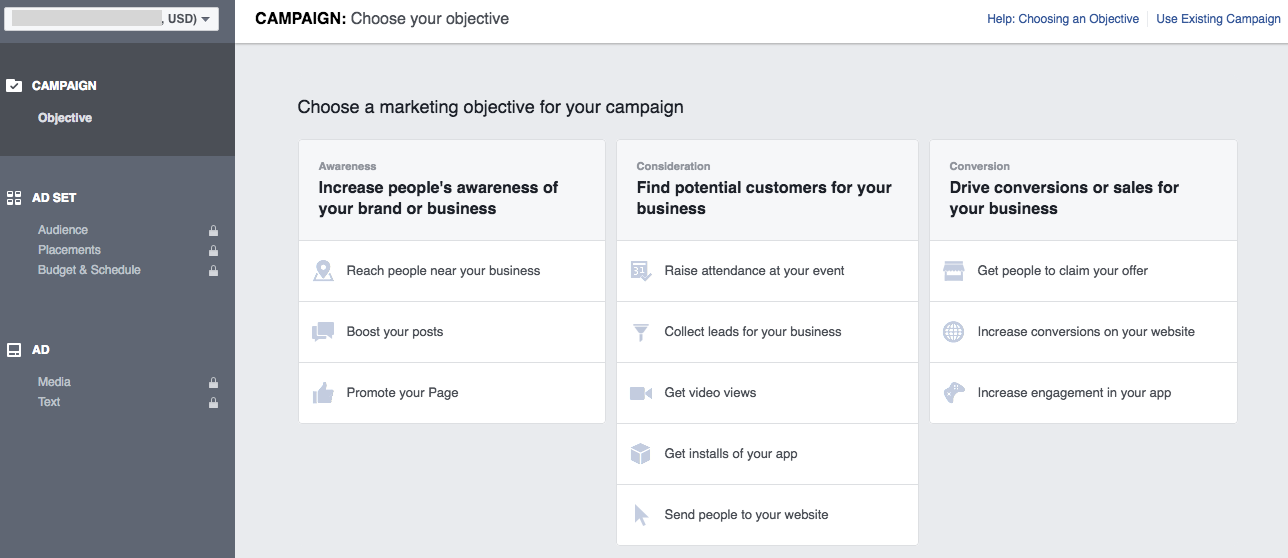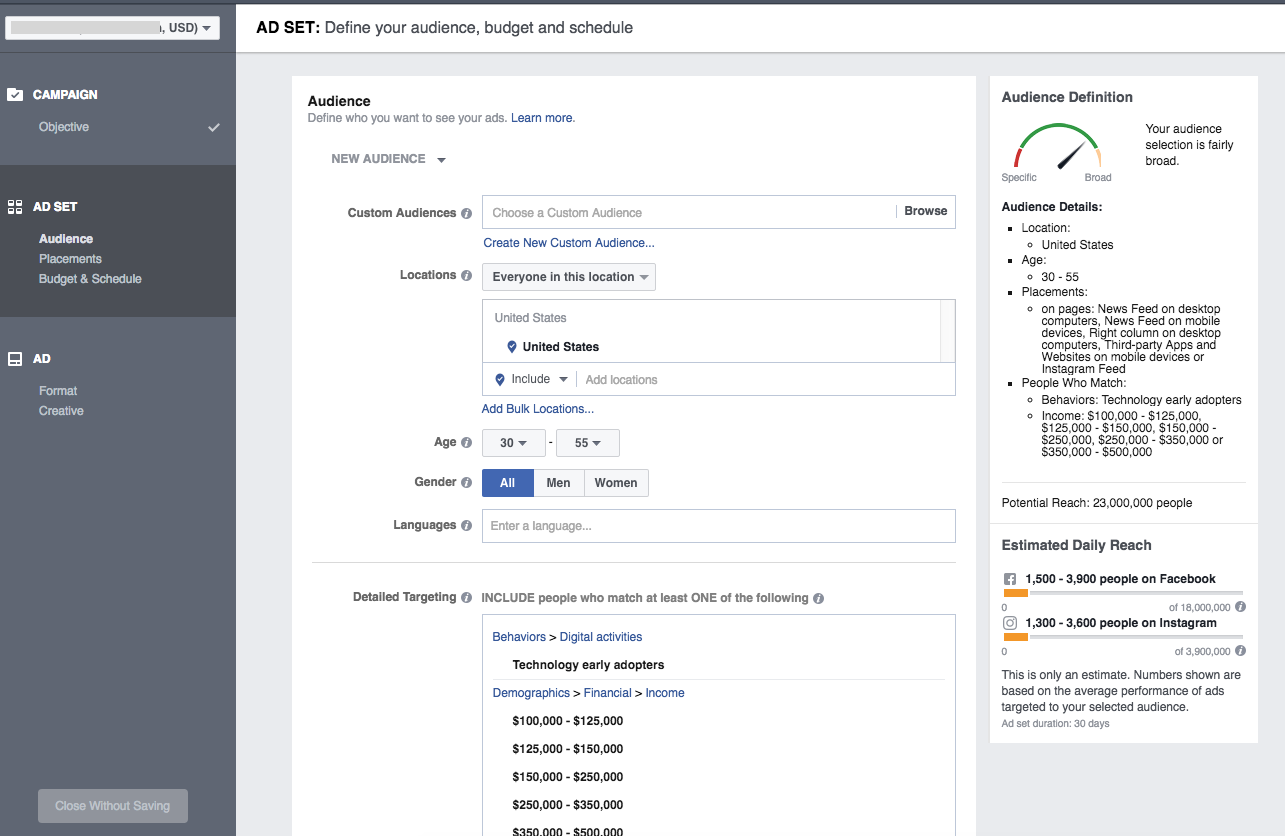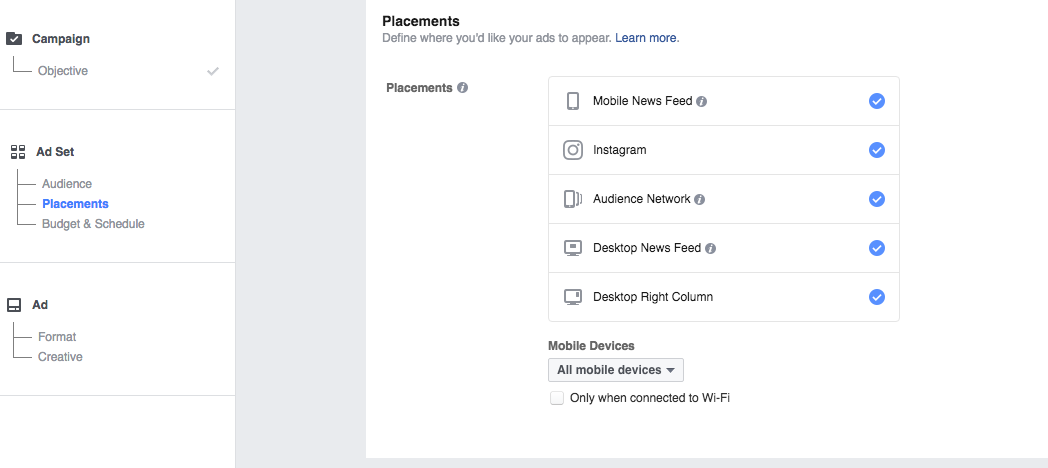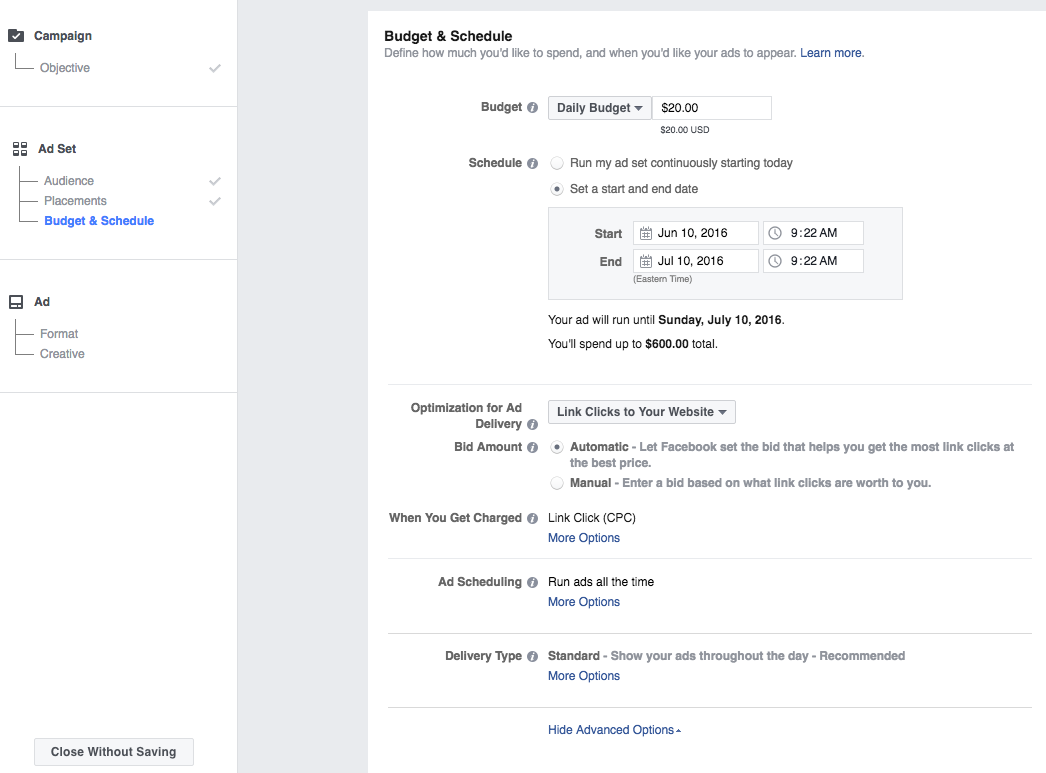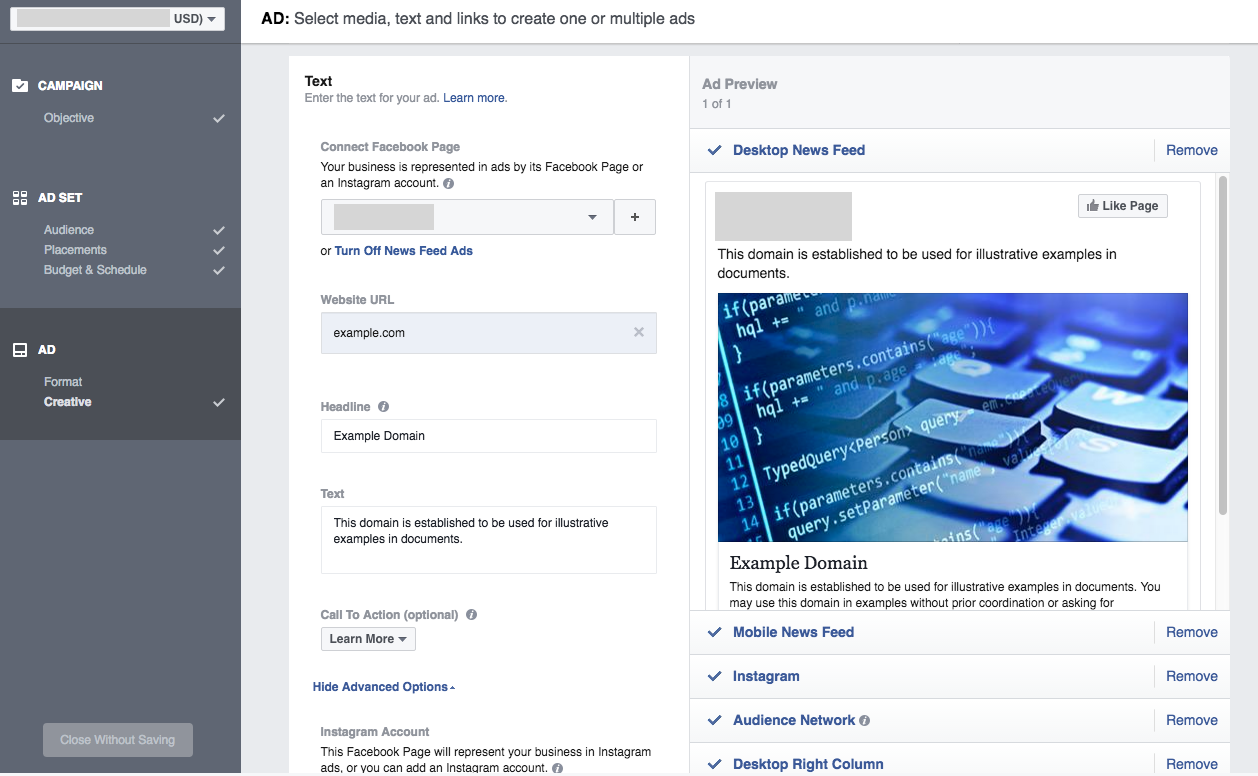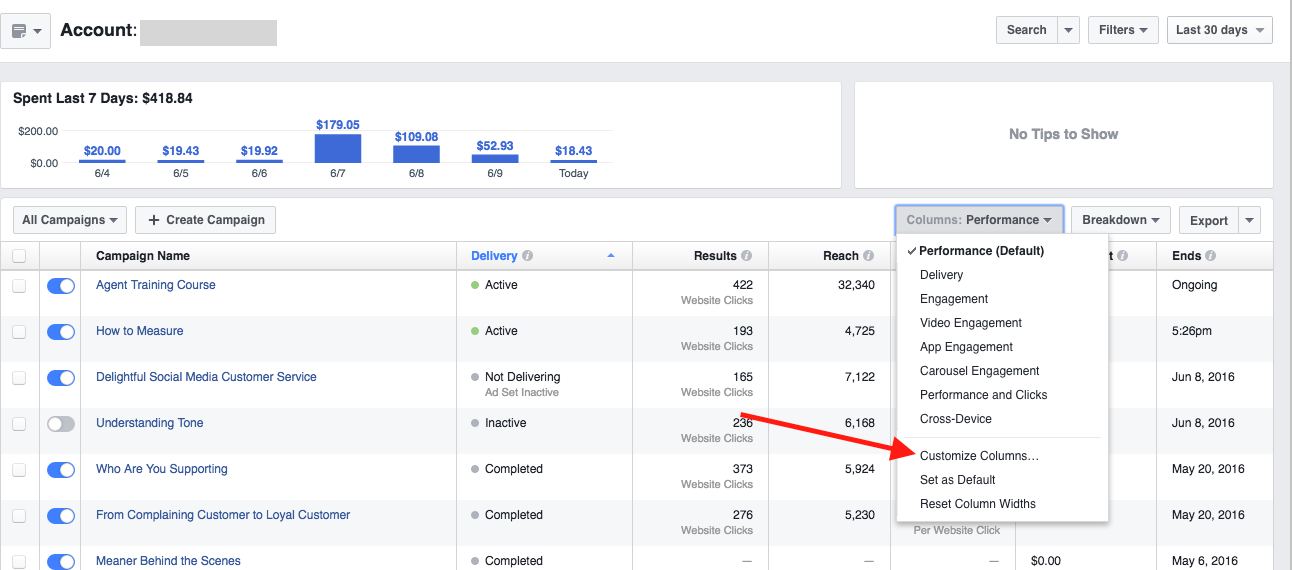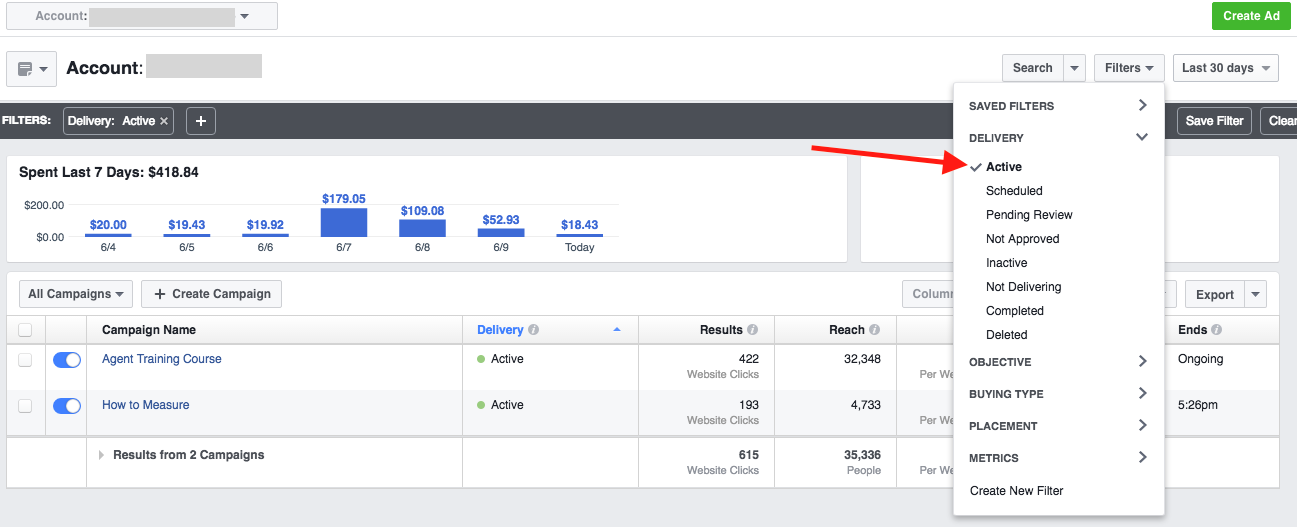May 21, 2024
Using the Facebook Ads Manager
By Megalytic Staff - July 07, 2016
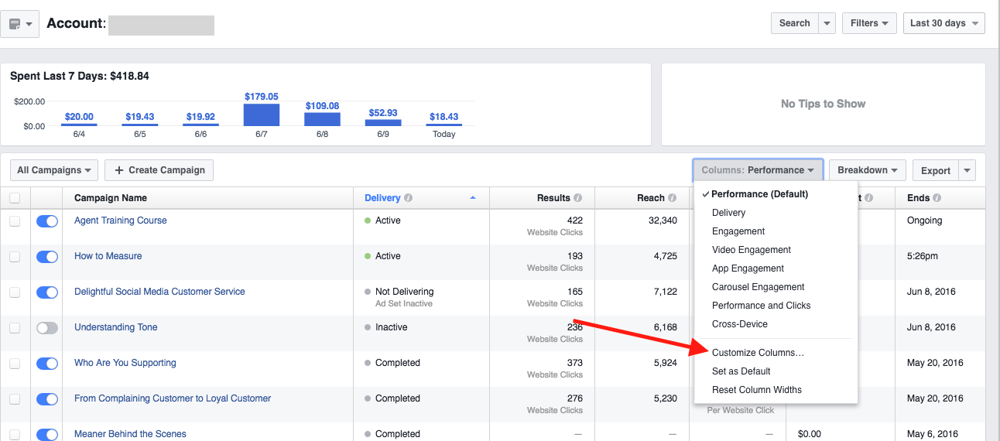
Understanding Facebook Ad Campaign Structure
At the top level, your Facebook advertising account contains your company information and billing details. You can also assign access to individuals on the account level. Finally, you can see aggregated metrics for the entire account, such as total spend on reach.
The account breaks down further into campaigns , for which you set an advertising objective. The objective will affect what types of ads you can run and what kinds of bidding you can choose. Available objectives include:
- Generating local awareness
- Boosting a post
- Sending people to your website
- Collecting leads
- Raising event attendance
- Getting offer claims
- Driving app installs
- Increasing app engagement
Within each campaign , you can create multiple ad sets . Each ad set contains audience targeting criteria, schedule, and budget. Finally, each ad set can contain multiple ads, which you can create in many different formats, depending on your objective. With so many different options and combinations, it may take time to fully explore your options and find the right balance.
Creating a New Campaign
It all starts by setting up and jumping in. Once you’ve entered the Facebook Ads Manager, you can begin creating a new campaign. Click the “Create Campaign” button in the upper left above the list of campaigns. You’ll go through six steps.
Step 1: Objective
First you’ll see a screen where you can choose the objective mentioned earlier. Think carefully about you’re objective and what you’re trying to achieve. For instance, the “Boost Your Posts” goal can easily waste spend if your ultimate goal is to drive people from a link in a post to your website. You’ll pay for any engagement with a post (likes, comments, shares, etc.) in addition to clicks. If your goal is to drive an audience to a blog post, you should choose the “Send people to your website” objective instead.
Once you choose your objective, you’ll see a prompt to name your campaign.
Step 2: Audience Targeting
Next, you can proceed to creating an ad set within the campaign.
Here, you can define age ranges, gender, language, geography, interests, behaviors, and other audience targeting criteria. You can also target people who like your page. We’ll get into choosing your target audience with a lot more detail in a future post.
Step 3: Placement
In addition, you can choose what types of Facebook ad placements you want to use: mobile vs. desktop, news feed vs. right hand side. You can also control whether or not your ads appear on Instagram here. Finally, you can choose to show ads on all mobile devices or just a specific type: Android, iOS, or feature phones.
Step 4: Budget & Time Frame
Finally, you can set a budget and the timeframe for your campaign. You can choose between a daily budget, in which you define a maximum spend for each day, and a lifetime budget, in which you define a maximum spend for the duration of the ad set’s schedule. Facebook generally will attempt to allocate the lifetime budget evenly each day.
Next, you can set your campaign to run continuously or choose to run it within a set timeframe. You can even specify start and end times down to the minute.
Step 5: Bids
In the Optimization section, you can choose how you bid for ad placements: by link clicks, impressions (showing ads as many times as possible), or unique reach (delivery to unique individuals no more than once in a day). You can also select whether you’ll use automatic bidding or set bids manually.
While we tend to recommend hands-on control of bids in most advertising systems, Facebook’s auto-bidding actually tends to be fairly effective at getting ad results with an efficient cost. Of course, you’ll want to watch performance closely to see if manual bidding may prove more efficient.
Step 6: Create an Ad
Once you’ve built an ad set, your final step is to create an ad. You can choose your ad format; options may vary depending on the campaign objective. In this case, for the “Send people to your website” objective, we can create an ad with a single image or an ad with multiple images ( Carousel format ).
Here, you can upload an image, insert a link, and add your copy. You can also preview how the ad will look in various formats to ensure that your image displays properly and text isn’t cutting off. Once you’ve finalized your ad, you can save it and launch the campaign. You should also create at least one additional ad, with different copy and/or imagery, to test against this one.
Evaluating Performance
Once you’ve launched a campaign, you can review its performance within the Ads Manager interface. When you log in, you’ll see a list of campaigns in the main screen with columns for performance metrics. Click the heading for any metric to sort by that column; for instance, if you want to quickly see which campaign has reached the most people, you can sort by the Reach column.
Use the “Columns” dropdown above this section to customize the metrics that appear. Within the dropdown, you’ll see several options for sets of columns. We’ll choose “Customize Columns” to select the specific metrics we want to include.
Now, you can scroll through a list of metrics, checking the boxes next to the ones you want to add. For instance, in addition to showing clicks and reach, you may also want to show how many new likes resulted from your ads. Once you click Apply, you’ll see any new metrics you’ve added in the interface. If you want to show only select campaigns in the interface, use the Filter dropdown in the upper right. For instance, you may want to display only active campaigns using the Active filter.
Other filters you may find useful include filtering by objective or looking at placement by device. Note that you can also use the Search button next to Filter to find campaigns, ad sets, or ads by name.
Conclusion
You can use the Facebook Ads Manager to create tightly targeted campaigns and customized creative. To evaluate the success of your campaigns, you can easily review a number of metrics. If you’re not overly familiar with the interface, or you’re just getting into the world of highly targeted Facebook Ads, all of the variations and nuances may come with a learning curve before you establish your most effective strategy. Through a process of testing you’ll get a stronger sense of how to customize your campaigns, drill into results and apply the insights the metrics provide.
Looking ahead, we’ll plan to cover some more topics related to Facebook Ads, digging deeper into strategies for targeting campaigns and optimizing ad performance. Keep an eye on our blog for more Facebook Ads-related announcements coming soon!


